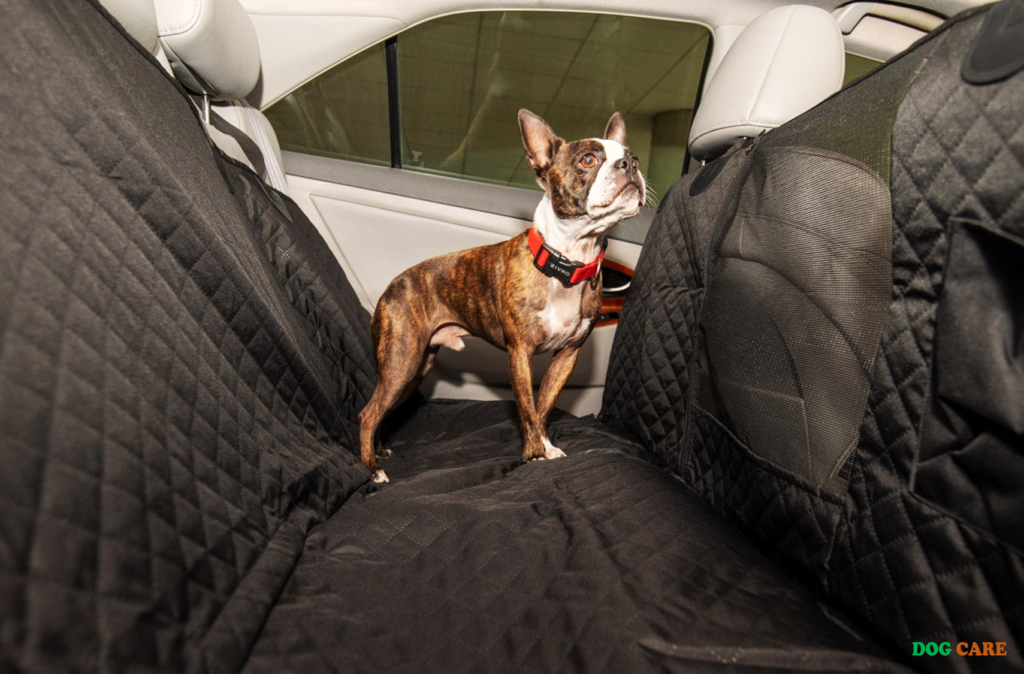How Long Can a Dog Survive With Labored Breathing: A dog with labored breathing can survive for a limited time, depending on the underlying cause and the severity of the condition. Labored breathing in dogs can be a sign of various health issues, such as heart disease, lung problems, or respiratory infections.
If left untreated, these conditions can worsen over time and lead to complications. Seeking prompt veterinary care is crucial in determining the cause of labored breathing and implementing appropriate treatment. The life expectancy of a dog with labored breathing can vary greatly, ranging from a few hours to several months or even years.
Factors that can influence a dog’s lifespan include the specific ailment causing their breathing difficulties, their overall health, and the effectiveness of treatment. Regular check-ups, early diagnosis, and proper management can help improve the quality and duration of a dog’s life.

How Long Can a Dog Survive With Labored Breathing: Causes Of Labored Breathing
Labored breathing can be a concerning symptom in dogs and is often an indication of an underlying health issue. Understanding the causes of labored breathing is essential for providing proper care and treatment for your furry companion.
Respiratory Disorders
Dogs can suffer from various respiratory disorders that may contribute to labored breathing. These conditions can include:
- Chronic bronchitis
- Pneumonia
- Asthma
- Lung cancer
- Tracheal collapse
- Upper respiratory infections
- Obstructive airway diseases
These respiratory disorders can lead to inflammation, narrowing of airways, and increased effort in breathing for your dog.
Heart Conditions
Heart conditions can also be responsible for labored breathing in dogs. When the heart is unable to pump blood effectively, fluid can accumulate in the lungs, leading to difficulty in breathing. Common heart conditions associated with labored breathing include:
- Heart failure
- Arrhythmias
- Valvular disease
- Cardiomyopathy
These conditions can cause the heart to work harder, resulting in labored breathing and reduced oxygen exchange.
Neurological Issues
Sometimes, neurological issues can impact a dog’s breathing. These conditions can affect the nerves or muscles involved in the respiratory system. Neurological causes of labored breathing may include:
- Spinal cord injuries
- Brain tumors
- Seizures
- Muscle weakness
- Paralysis
These neurological problems can disrupt normal breathing patterns and make it more difficult for dogs to breathe comfortably.
Allergic Reactions
Allergic reactions to certain substances, such as pollen, dust mites, or certain foods, can also lead to labored breathing in dogs. When a dog comes into contact with an allergen, it can trigger an immune response, causing swelling and inflammation in the airways, leading to breathing difficulties. Common signs of allergic reactions may include:
- Sneezing
- Coughing
- Itchy skin
- Watery eyes
If your dog is experiencing labored breathing along with these symptoms, it is important to consult with a veterinarian for proper diagnosis and treatment.
Effects On A Dog’s Overall Health
Labored breathing in dogs can have a significant impact on their overall health. It can be a symptom of various underlying health issues and can affect their lifespan. It is crucial to address this issue promptly by seeking veterinary care to ensure the dog’s well-being.
Decreased Oxygen Supply To Organs
Dogs with labored breathing experience a decreased oxygen supply to their organs, which can have severe consequences on their overall health. When breathing is compromised, the lungs struggle to take in enough oxygen, leading to reduced oxygen levels in the bloodstream. This condition, known as hypoxemia, can negatively impact the vital organs, as they depend on oxygen for proper functioning.
Increased Stress On The Heart
The labored breathing in dogs exerts increased stress on their heart, which can be detrimental to their well-being. When the lungs are not functioning optimally, the heart has to work harder to pump sufficient oxygenated blood throughout the body. This increased workload on the heart can lead to cardiac strain and potentially result in heart-related issues.
Potential Organ Damage Or Failure
The prolonged labored breathing in dogs can potentially cause organ damage or failure due to the inadequate supply of oxygen. Organs like the kidneys, liver, and brain are especially vulnerable as they rely on a constant and sufficient oxygen supply to carry out their vital functions. Without an adequate oxygen level, these organs may become compromised, leading to various health complications.
Duration Of Survival
Labored breathing in dogs can be a concerning sign of an underlying health issue. The duration of survival varies depending on the cause and treatment options available. Consulting a veterinarian is crucial for assessing the dog’s condition and determining the best course of action for their well-being.
Factors Affecting The Dog’s Ability To Survive
When a dog is experiencing labored breathing, the duration of their survival can vary depending on various factors. These factors can significantly impact a dog’s ability to overcome their breathing difficulties and regain their health. It is crucial to understand these factors to determine the potential time limits for a dog with labored breathing.
One of the primary factors affecting a dog’s ability to survive with labored breathing is the underlying cause of the condition. Certain medical conditions, such as respiratory infections, heart disease, or lung disorders, can have different implications for a dog’s overall health and survival. Additionally, the severity of the condition and the dog’s overall health and age also play a crucial role in determining their ability to overcome labored breathing.
Seeking Immediate Veterinary Care
To ensure the best possible outcome for a dog with labored breathing, it is essential to seek immediate veterinary care. Prompt medical attention can significantly improve the chances of successful treatment and increase the dog’s chances of survival. Veterinarians have the necessary expertise and resources to diagnose the underlying cause of labored breathing and provide appropriate treatment options.
When a dog displays symptoms of labored breathing, such as rapid shallow breaths, wheezing, or struggling to catch their breath, it is crucial not to delay seeking veterinary care. Timely intervention can help stabilize the dog’s condition, relieve their breathing difficulties, and address any underlying medical issues. Remember, the sooner the dog receives the necessary medical attention, the better their chances of survival.
Potential Time Limits Based On Conditions
The potential time limits for dogs with labored breathing can vary based on the underlying conditions. Here are a few examples:
| Condition | Potential Time Limits |
|---|---|
| Respiratory Infections | With appropriate treatment, dogs can recover within a few weeks. |
| Heart Disease | The prognosis depends on the specific type and severity of the heart disease. Dogs with mild cases and proper management may have a good quality of life for months to years. |
| Lung Disorders | The survival time can vary depending on the specific disorder and its progression. Some dogs may have a reduced lifespan due to chronic respiratory issues. |
It is important to note that these potential time limits are general guidelines, and every dog’s situation is unique. The overall prognosis can be influenced by various factors, including the response to treatment, the dog’s health status, and the presence of any other underlying medical conditions. In conclusion, the duration of survival for a dog with labored breathing depends on many factors.
Seeking immediate veterinary care is crucial to improve the dog’s chances of survival. Understanding the potential time limits associated with specific conditions helps owners make informed decisions about the best course of action for their beloved pets. Remember, always consult with a veterinarian for a proper diagnosis and personalized treatment plan.
Treatment And Management
When it comes to a dog with labored breathing, proper treatment, and management are crucial to improve their respiratory health and possibly extend their life. The first step is identifying the underlying cause, which can be done through a combination of physical examination, diagnostic tests, and medical history review.
Identifying The Underlying Cause
To effectively manage labored breathing in dogs, it is essential to determine the underlying cause that is leading to this respiratory distress. A veterinarian will conduct a thorough physical examination, evaluating the dog’s breathing patterns, lung sounds, and overall health. Diagnostic tests such as blood work, X-rays, and ultrasounds may be necessary to get a clear picture of what is causing the breathing difficulties. Additionally, the vet will review the dog’s medical history, including previous illnesses or injuries, which can provide vital clues about the root cause.
Administering Medication And Oxygen Therapy
Once the underlying cause of labored breathing is identified, the veterinarian may prescribe medication to alleviate the symptoms and manage the condition. Medications can help reduce inflammation, open up airways, and address specific respiratory issues. In certain cases, oxygen therapy may be necessary to provide immediate relief and improve oxygenation. This can involve the use of an oxygen mask, oxygen chamber, or nasal cannula to deliver concentrated oxygen to a dog with impaired breathing. The vet will determine the appropriate dosage and duration of medication or oxygen therapy, considering the dog’s condition and response to treatment.
Lifestyle Changes For Better Respiratory Health
To support long-term respiratory health, certain lifestyle changes may be necessary for a dog with labored breathing. This can include:
- Avoiding exposure to environmental pollutants and irritants that can trigger respiratory distress
- Maintaining a healthy weight to prevent excessive strain on the respiratory system
- Implementing regular exercise to improve overall lung function and cardiovascular health
- Providing a well-balanced diet that includes nutrients beneficial for respiratory health, such as antioxidants and omega-3 fatty acids
- Keeping the dog’s environment clean and free of allergens, dust, and mold
These lifestyle changes, combined with proper medical management, can significantly improve a dog’s respiratory health and enhance their overall quality of life.
Frequently Asked Questions Of How Long Can A Dog Live With Labored Breathing
Q1: Can Labored Breathing Be A Serious Condition For Dogs?
Labored breathing in dogs can be a sign of a serious underlying health issue and should not be taken lightly.
Q2: What Are Some Common Causes Of Labored Breathing In Dogs?
Labored breathing in dogs can be caused by respiratory infections, heart disease, lung disorders, or even obesity.
Q3: How Can I Tell If My Dog Is Experiencing Labored Breathing?
Signs of labored breathing in dogs include rapid or shallow breaths, wheezing, coughing, or struggling to catch their breath.
Q4: When Should I Seek Veterinary Care For My Dog’s Labored Breathing?
If your dog’s labored breathing persists for more than a few minutes, is accompanied by blue gums, or appears distressed, you should seek immediate veterinary care.
Q5: Can Labored Breathing Be Treated In Dogs?
Treatment for labored breathing in dogs depends on the underlying cause and may involve medication, lifestyle changes, or surgical interventions. It is important to consult with a veterinarian for proper diagnosis and treatment options.
Conclusion
A dog experiencing labored breathing can be indicative of underlying health conditions that require immediate attention. Depending on the cause, the lifespan of the dog may be significantly shortened. It is crucial to seek veterinary assistance to diagnose and treat the underlying condition promptly, ensuring the dog’s well-being and longevity.
By being vigilant and proactive in monitoring your dog’s breathing patterns, you can help ensure a long and healthy life for your beloved pet.


